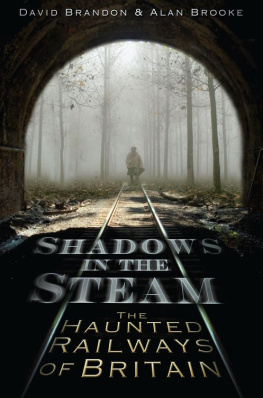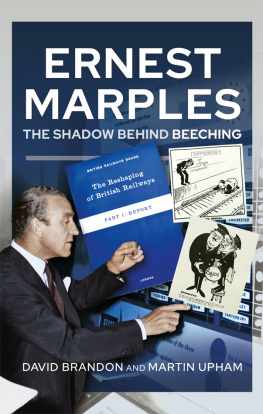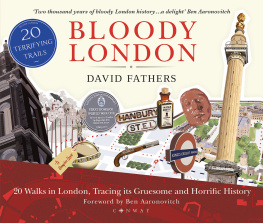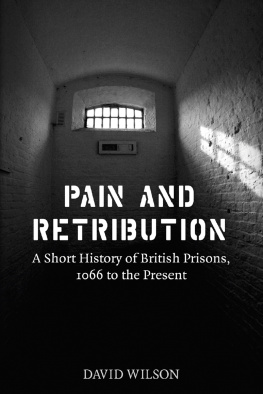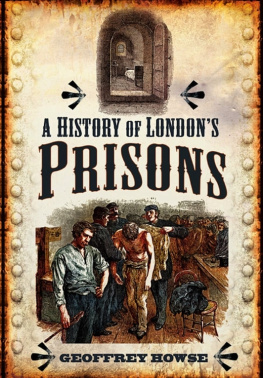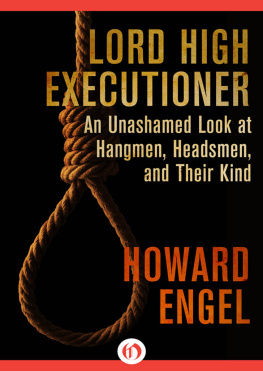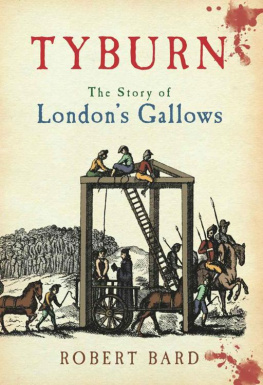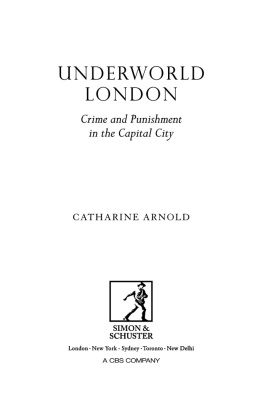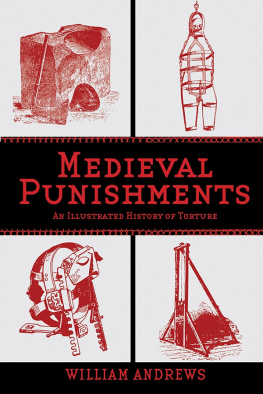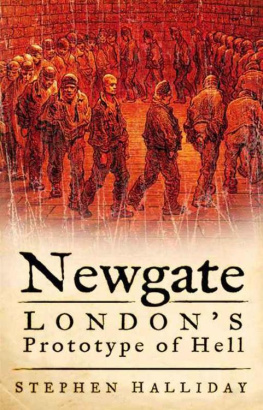OLDE
LONDON
Punishments
OLDE
LONDON
Punishments
Alan Brooke & David Brandon

First published 2010
The History Press
The Mill, Brimscombe Port
Stroud, Gloucestershire, GL5 2QG
www.thehistorypress.co.uk
This ebook edition first published in 2013
All rights reserved
Alan Brooke & David Brandon, 2010, 2013
The right of Alan Brooke & David Brandon to be identified as the Author of this work has been asserted in accordance with the Copyright, Designs and Patents Act 1988.
This ebook is copyright material and must not be copied, reproduced, transferred, distributed, leased, licensed or publicly performed or used in any way except as specifically permitted in writing by the publishers, as allowed under the terms and conditions under which it was purchased or as strictly permitted by applicable copyright law. Any unauthorised distribution or use of this text may be a direct infringement of the authors and publishers rights, and those responsible may be liable in law accordingly.
EPUB ISBN 978 0 7509 5270 5
Original typesetting by The History Press
Changing Punishment Through the Centuries
London has a long history of criminal activity and an equally long history of brutal public punishments. Whippings, brandings, mutilations, transportation and public humiliation in the stocks and the pillory, all of which ended in the nineteenth century, existed for a range of offences. Before 1868 many of these were part of the public spectacle. These gruesome displays attracted huge crowds to the various sites of execution and torture where people would witness, or perhaps be entertained by, the grisly spectacle of the condemned going through the agonies of their proscribed ordeal. This section will look at the development of punishments in London (although these punishments were also implemented elsewhere).
In the seventh century, King Ethelbert I introduced what seems to have been the first written English penal system. Punishment was based on fines, with sliding scales of compensation for the victims of the crime. A person who was assaulted and lost an eye, for example, was entitled to 50s from the assailant, whereas a lost toe only rated 6d. Often the rate varied with the social status of the victim and assailant. This system was refined by the Danes who had a very complicated tariff of compensation which meant, quite literally, that every man had his price. The Crown also took a share of the fine and often of the assets of the offender a stealth tax. An ingenious fund-raiser was the selling by the Crown of pardons even in advance of any crime being committed. It was, in effect, a form of insurance on the part of those who thought that they might well offend in the future and wanted to take out precautions.
As far as the penal system was concerned, women did not count. Little is known about how this system worked out in practice. Perhaps it did not work very well, if only because fines evaded the question of the element of revenge which is so critical where punishment is concerned. In the tenth century, whipping and mutilation were introduced. Canute gained the throne in 1016 and his reign was noted for unprecedented social peace. Perhaps this was because offenders were liable to being scalped or having noses, ears or eyes removed. William the Conqueror was not prepared to put up with any nonsense and added removal of the testicles for certain offences, although he also abolished the death penalty. The right to inflict this had previously been shared between the Crown and the barons. Astutely, William, wary as ever of any potential rivals for power, concentrated the official infliction of punishment under the auspices of the Crown.
It was during Williams reign that ecclesiastical courts were established to deal with offences against the Church while civil courts adjudicated on crimes against the people. Generally, the ecclesiastical courts levied less severe punishments and so better-off laymen who were literate started claiming that they were priests and demanding to be tried in the Church courts. This anomalous practice was known as claiming benefit of clergy and clearly discriminated against the poor. Over the centuries, more and more people took advantage of this loophole. Even a total ignoramus who managed to memorise the first verse of the Fifty-First Psalm was entitled to claim clerical privilege. This became known as the Neck Verse and went as follows: Have mercy upon me, O God, according to thy loving kindness: According to the multitude of thy tender mercies, blot out my transgressions. Continuing abuse of this practice led to the creation in 1496 of offences which were non-clergyable. This meant that anyone charged with an offence such as the killing of his lord, master or sovereign could not plead benefit. Soon afterwards, anyone who had been convicted of a clergyable offence was to be branded on the thumb so that they could not enjoy the privilege a second time. Then it became possible to pay a bribe which meant that a cold iron would be applied to offenders who had the money.
After William died, his son William II reintroduced the death penalty for poaching deer in the royal forests, and Henry I extended capital punishment. The belief was that only God knew whether a suspect was innocent or guilty and to help the Almighty make up his mind on such matters, trial by water or fire was devised. In the case of the latter, the theory was that the guilty would float and the innocent sink. In the case of fire, the accused had to hold a red-hot bar and if, three days later, his skin was not scarred he was deemed innocent. Less drastic was subjecting offenders to public ridicule as a deterrent. This practice was particularly applied to bakers of underweight loaves or brewers who over-watered their beer. Such a baker might be humiliated by being drawn around the town on a hurdle with an example of an offending loaf tied around his neck. His standing in the community and his business might be seriously damaged by this punishment. Sometimes the offending loaves would be made available for the crowd to pelt the dishonest baker. A brewer might be forced to drink as much of his substandard beer as he could swallow and then have the rest poured over him. More serious offences such as murder, treason, burglary and robbery carried the death sentence.
In 1154, Henry II came to the throne and embarked on an overhaul of the legal and penal system which involved ensuring that every county had a prison used to house those awaiting trial or sentencing. Other reforms included amputation of the right hand and right foot for robbery, murder and coining, rather than death.
It was in the thirteenth century that trial by jury was introduced. Corporal punishment involving the use of stocks for minor offences and the whipping post and the pillory became common. The idea of public humiliation can be seen in all these instruments. A new punishment was outlawry. The victim, his family and property, if any, lost all the protection of the law and thereafter they were friendless. In the early years they could be killed with impunity by any citizen. Those who harboured them or gave them succour could be punished. Several monarchs found outlawing highly profitable: it enabled them to sequester the property of the outlaws.
In 1241, hanging, drawing and quartering was introduced for those guilty of treason. The victim was drawn through the streets to the place of execution initially they were dragged along the road but this was found to be inconvenient because it injured or sometimes killed them prematurely. For that reason it became normal to convey them on a horse-drawn hurdle. They were then hanged until almost on the point of expiry, whereupon they were cut open and eviscerated, their entrails often being burnt in front of them. On occasion, they would be castrated. Lastly, they were dismembered. Often their limbs and especially their heads, treated with preservative, were put on display in some prominent place. The gates to London Bridge were one favourite location. It used to be the practice to take a family walk on a Sunday and go have a look at how the heads were doing. From 1684, Temple Bar was another place where the heads and various body parts of traitors might be found. Spyglasses could be hired for closer scrutiny of the grisly remains posted up there.
Next page


